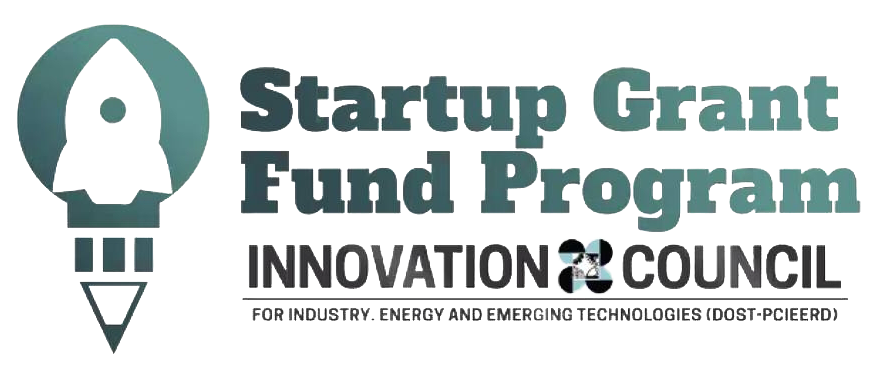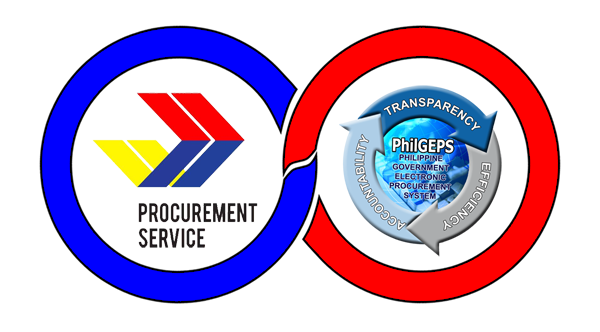As a manager, learning how to speak the language of upper management is essential to understand, communicate goals, strategies, and results with your peers. One crucial aspect of this language is mastering key business terms that form the foundation of decision-making, analysis, and performance evaluation. Whether you’re discussing financial metrics with the CFO, presenting marketing strategies to the CMO, or collaborating with cross-functional teams, having a solid understanding of these business terms not only enhances your credibility but also ensures clarity and alignment across the organization. In this article, we’ve compiled a list of 50 essential business terms spanning accounting, marketing, sales, tech, and human resources. Whether you’re discussing financial metrics, crafting marketing strategies, or navigating HR practices, these terms will empower you to communicate like a boss!
What are Business Terms

Business terms is a specialized vocabulary and terminology used within the context of business and commerce. These terms extend to a wide range of concepts and practices relevant across departments in a business. Your finance, marketing, sales, tech, and HR department has its own terms and understanding these terms can effectively improve communication, decision-making, and collaboration in your organization.
50 Business Terms
10 Accounting Terms in Business
- Return on Investment (ROI)
A measure of the profitability of an investment relative to its cost, providing insight into the efficiency of capital allocation within a company.
- Cash Flow
Represents the net amount of cash and cash equivalents moving into and out of a business, crucial for assessing liquidity and financial health.
- Break-even Point
The level of sales at which total revenue equals total costs, indicating the minimum sales required for a business to cover its expenses and achieve profitability.
- Revenue
The total income generated from the sale of goods or services, essential for assessing a company’s financial performance and growth.
- Profit Margin
Measures the percentage of revenue that exceeds the costs of goods sold and other expenses, reflecting a company’s profitability and operational efficiency.
- Balance Sheet
A financial statement that provides a snapshot of a company’s financial position by listing its assets, liabilities, and shareholders’ equity at a specific point in time.
- Income Statement
Summarizes a company’s revenues, expenses, and net income over a specific period, providing insights into its profitability and operational efficiency.
- Cost of Goods Sold (COGS)
Represents the direct costs associated with producing or purchasing the goods sold by a company, essential for calculating gross profit and assessing product profitability.
- Asset Allocation
Involves distributing investment assets among different asset classes, such as stocks, bonds, and cash, to achieve diversification and manage risk effectively.
- Debt-to-Equity Ratio
Compares a company’s total debt to its shareholders’ equity, indicating its leverage and financial risk profile. It helps investors and creditors assess a company’s ability to repay its debts and withstand financial shocks.
10 Marketing Terms in Business
- Market Segmentation
Dividing a target market into distinct groups based on demographics, behavior, or other characteristics to tailor marketing strategies.
- Brand Equity
The value and perception of a brand in the eyes of consumers, influencing their purchasing decisions and loyalty.
- Unique Selling Points (USPs)
Distinctive features or benefits of a product or service that differentiate it from competitors in the market.
- Customer Lifetime Value (CLV)
The predicted total value that a customer will generate for a business throughout their relationship.
- Cost Per Action (CPA)
The cost incurred by a marketer for each specified action, such as a click, form submission, or purchase, generated by advertising efforts.
- Customer Acquisition Cost (CAC)
The cost associated with acquiring a new customer, including marketing and sales expenses.
- Customer Relationship Management (CRM)
A system or strategy used to manage interactions with current and potential customers, aiming to improve relationships and drive sales growth.
- Market Share
The percentage of total sales or revenue in a specific market that a company captures, indicating its competitive position.
- SWOT Analysis
A strategic planning tool that evaluates a company’s strengths, weaknesses, opportunities, and threats to inform business decisions.
- Product Development Lifecycle
The process of bringing a new product from concept to market, including idea generation, product design, development, testing, launch, and post-launch evaluation.
10 Sales Term in Business
- Lead Generation
The process of identifying and attracting potential customers or prospects for a business’s products or services.
- Sales Funnel
A visual representation of the stages that a potential customer goes through before making a purchase, from awareness to conversion.
- Closing Ratio
The percentage of sales opportunities that result in a successful sale or transaction, indicating the effectiveness of a salesperson or sales team.
- Upselling
The practice of persuading a customer to purchase a more expensive or upgraded version of a product or service.
- Cross-selling
The technique of selling additional or complementary products or services to existing customers, increasing the value of each transaction.
- Sales Pipeline
A visual representation of the stages that sales leads move through as they progress towards becoming customers, helping sales teams track and manage their opportunities.
- Account Management
The process of building and maintaining relationships with key customers or accounts to ensure their satisfaction and loyalty.
- Objection Handling
Involves addressing and overcoming concerns raised by potential customers during the sales process, by listening to their objections and providing persuasive responses or solutions.
- Sales Forecasting
The process of estimating future sales performance based on historical data, market trends, and other relevant factors to inform business planning and resource allocation.
- Sales Quota
A predetermined sales target or goal set for individual sales representatives or teams to achieve within a specific period, serving as a performance benchmark and incentive.
10 Tech Terms in Business
- Agile Methodology
Agile methodology is an iterative approach to software development that emphasizes flexibility, collaboration, and customer feedback to deliver high-quality products efficiently.
- Cloud Computing
Cloud computing involves delivering computing services over the internet, offering resources like servers, storage, databases, networking, and software on-demand, providing scalability, flexibility, and cost-effectiveness for businesses.
- Data Analytics
Data analytics involves analyzing raw data to uncover insights, trends, and patterns that help businesses make informed decisions, optimize operations, and enhance customer experiences.
- Blockchain Technology
Blockchain is a decentralized and distributed digital ledger technology that records transactions across multiple computers in a secure and tamper-proof manner, offering transparency and trust in various business processes.
- Internet of Things (IoT)
IoT is a network of interconnected devices, sensors, and objects embedded with internet connectivity, enabling businesses to collect and exchange data for real-time insights, automation, and optimization.
- Cybersecurity
Cybersecurity focuses on protecting computer systems, networks, and data from unauthorized access, cyberattacks, and breaches, essential for safeguarding business assets and maintaining trust.
- Software as a Service (SaaS)
SaaS is a software delivery model where applications are hosted by a third-party provider and accessed over the internet on a subscription basis, eliminating the need for on-premises infrastructure and maintenance.
- Machine Learning
Machine learning is a subset of AI that enables computer systems to learn from data and make predictions or decisions without explicit programming, applied in tasks such as predictive analytics, recommendation systems, and process automation in business operations.
- Robotic Process Automation (RPA)
RPA involves automating repetitive and rule-based tasks by using software robots or “bots” to streamline business processes, improve efficiency, and reduce human error.
- API (Application Programming Interface)
An API is a set of rules and protocols that allows different software applications to communicate and interact with each other, enabling seamless integration and interoperability in business processes and systems.
10 Human Resources (HR) Terms in Business
- Talent Management
The strategic process of attracting, developing, and retaining skilled employees to meet current and future business needs, encompassing recruitment, onboarding, performance management, and career development initiatives.
- Learning and Development Strategy
A systematic approach to identifying, planning, and implementing training and development programs to enhance the knowledge, skills, and competencies of employees, aligning with organizational goals and fostering a culture of continuous learning.
- Performance Appraisal Systems
Formal processes and methods used by organizations to assess and evaluate employee performance against predefined goals and expectations, providing feedback, recognition, and opportunities for improvement.
- Total Rewards
The comprehensive package of monetary and non-monetary benefits offered to employees in exchange for their contributions to the organization, including compensation, benefits, recognition programs, and work-life balance initiatives.
- Organizational Development
The planned effort to enhance organizational effectiveness and adaptability through initiatives such as change management, leadership development, culture transformation, and team building.
- Succession Planning
The strategic process of identifying and developing internal talent to fill key leadership and critical roles within the organization, ensuring continuity and sustainability in leadership and talent pipelines.
- High-Potential Identification
The process of identifying and nurturing employees who demonstrate the potential to take on leadership roles or make significant contributions to the organization in the future, through targeted development and career advancement opportunities.
- Workforce Analytics
The use of data and analytics to analyze workforce trends, patterns, and performance metrics, providing insights for informed decision-making, resource allocation, and strategic workforce planning.
- Employee Advocacy
The promotion and support of employees’ interests, rights, and well-being within the organization, fostering a positive work environment, trust, and employee engagement.
- Change Management Initiatives
Planned strategies and activities to effectively manage organizational change, including communication, stakeholder engagement, training, and support mechanisms to minimize resistance and maximize adoption of change initiatives.
Conclusion
Learning how to communicate in business terms is not just a fancy way of communicating, it’s about gaining practical skills as a manager to navigate and effectively collaborate across departments. By familiarizing yourself with business terms of different departments spanning finance, marketing, sales, tech, and human resources, managers like yourself can equip themselves with the knowledge needed to promote effective communication within the organization. Not only this enhances your business vocabulary, but also allows you to lead cross department initiatives more effectively, maximizing your potential as a manager.









